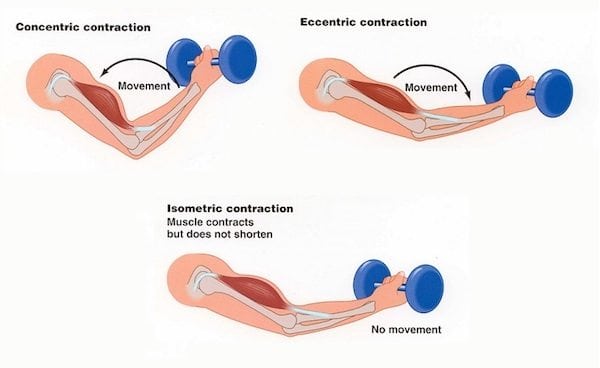No products in the cart.
Build Strength & Muscle with Eccentric Training

Eccentric training could be one of the best kept secrets in fitness, although anyone who tries it becomes an instant convert – it’s still unknown or unpopular with the majority.
Partly this is due to the difficulty in setting it up (or to be more accurate the perceived difficulty), but for the most part the reason why eccentric training is unknown is because barely anyone talks about it.
Let’s be clear, most of the most respected fitness experts advocate the benefits of incorporating eccentric training. But sadly the most respected fitness experts are usually drowned out by the loud voices of the non-experts.
So by now you hopefully understand that eccentric training is an underused and underrated tool, but why is that? What is eccentric training and what are the benefits of using it? This article will explore both questions and hopefully answer them!
What is an Eccentric Movement?

Imagine a bicep curl, you hold a dumbbell with your arm straight and pointing towards the floor.
Then you slowly curl the dumbbell up until it reaches the top of the movement (ending up in line with your shoulder), then after a brief pause you lower the weight back down to the starting position.
This simple movement involves two types of contraction (possibly three if you alter it slightly).
When curling the dumbbell up you are performing a concentric contraction, your muscles are becoming smaller and denser as you bring the weight up.
If you were to pause this movement half way up and keep your arm taught (despite the weight) you would be performing an isometric contraction.
When you lower the weight back down you are stretching and lengthening the muscle, this is known as an eccentric contraction.
It is important to understand that the eccentric part of the movement is where your muscles are lengthening – so during a bench press your pectoral (chest) muscles lengthen as you bring the bar down, and then they contract as you push the bar back up. During a squat your muscles lengthen as you lower yourself down.
What is Eccentric Training?
Eccentric training is concentrating on the eccentric part of the movement rather than the concentric (which is the part most people concentrate on). Because you can lift a lot more weight during the eccentric part of a movement than the concentric, you will be using weights that you cannot perform concentrically.
So if you can push 100kg on the bench press, you would use a barbell with 110kg or 120kg and just perform the eccentric part of the movement.
Lowering the bar and then getting a spotter (or two) to pull the bar off you when you get to the bottom.
The trick is to not lower the bar but to fight it, as you cannot lift 120kg the bar is eventually going to reach your chest whatever you do (once you get it started moving anyway).
Fight it continually, all the way until it reaches your chest, your muscle fibres will strain, and you will get the best workout ever.
A lot of eccentric exercises require a partner, but not all of them. There is a form of eccentric training which you can do on resistance machines.
Let’s use the leg press as an example; pick a weight that you can comfortably lift with two legs and push it up off the stoppers. Hold it at the top of the movement and then take one leg off. Now you have to lower the plate down with just one leg.
When you reach the bottom put your other leg back onto the plate and push up.
Perform this for 10 reps (or whatever rep range you are following) and then swap legs.
This also works really well on leg extensions, leg curls, and chest/shoulder presses which share the weight between both handles (rather than individual handles with their own weight).
What are the Benefits?
The most obvious benefit to eccentric training is that it increases strength and power, it is also a great way to increase muscle size (hypertrophy). But there are lesser known benefits to eccentric training that raises it above other strength and conditioning methods.
Eccentric training has been shown to increase flexibility, it is also a great way to increase range of motion for certain exercises.
The best benefit though? Eccentric training can lower injury risk.
How to add Eccentric Training into your Program
- Don’t overdo it, eccentric training should only be used once per session, and not every session
- Add it in as the last exercise to be performed on that muscle, don’t do eccentric bench press and then start on incline bench
- Use it as the last set (or couple of sets) to a regular exercise, or you can use it instead of the regular exercise
Give your muscles a rest afterwards, if you train eccentrics on squats, don’t try legs again the next day. Eccentric training causes more muscle damage than any other form of resistance exercise and the extra recovery time is needed.
Save
Save
Save
